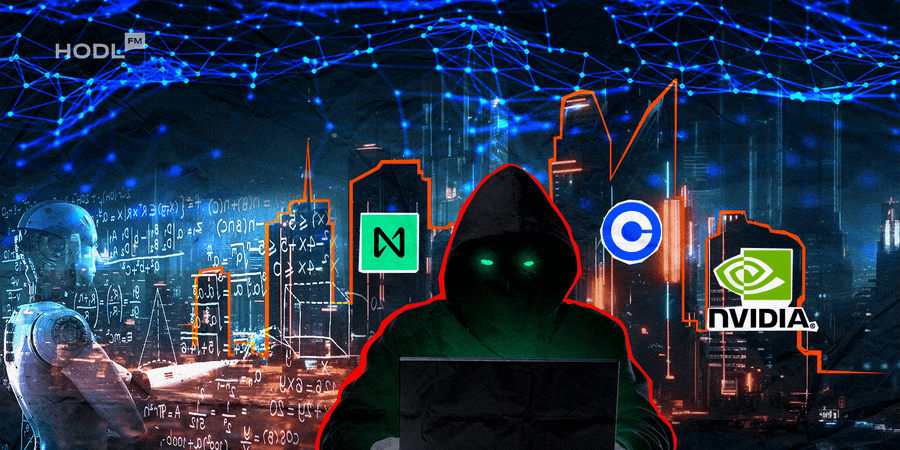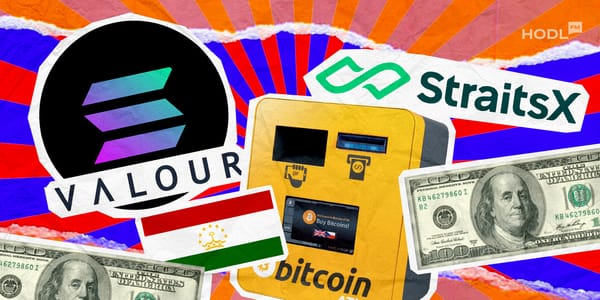Are you bored? Here we are back with another edition of the top news for the week. Coinbase, a prominent name in the crypto sphere, is making strides with its Base integration. Meanwhile, Nvidia’s dominance in the AI sector faces challenges. In a surprising turn of events, a hacker made headlines by returning stolen funds. Additionally, Near Protocol introduces Chain Signatures, promising new avenues for decentralized finance. Let’s delve together into these noteworthy updates.
Coinbase Expands Integration with Base
Coinbase is gearing up to move more of its client and corporate accounts’ stablecoin balances in USD Coin (USDC) to Base — its Ethereum Layer 2 blockchain, launched just over seven months ago.
This alteration solely impacts Coinbase.com accounts, excluding Coinbase Wallet users who retain responsibility for their private keys.
Currently, user tokens on Coinbase.com are stored by Coinbase in a wallet secured by multi-party computation.
On March 26, Coinbase Vice President Max Branzburg penned on X that this move will allow the crypto exchange to “manage and safeguard client funds with lower fees and faster settlement times.”
Coinbase’s move to blockchain will pave the way for a future blockchain-based financial system, explained David Hoffman, co-host of the Ethereum-focused Bankless show, in a March 26 X post.
Bankless co-host Ryan Sean Adams believes this move will also set a precedent for cryptocurrency exchanges and banks to follow suit.
Not Everyone’s on Board with This Move
According to L2BEAT data, Coinbase currently stands as the sole sequencer of Base, meaning the chain is entirely controlled by the exchange. User X, aka “callmeKappa.algo,” speculated that Base, in its current state, is just too centralized.
Base was launched as a scaling solution for Ethereum on August 9, 2023. It employs optimistic rollups to store transaction data off-chain and send transactions to the Ethereum base layer.
In October, Coinbase also open-sourced the Base code to increase transparency and accountability, while allowing the public to contribute to the project.
According to L2BEAT, it’s currently the fourth-largest Ethereum Layer 2 by total value locked at $2.63 billion, trailing only Arbitrum, Optimism, and Blast.
Nvidia’s AI Dominance Will End Soon
Nvidia became the first chipmaker to hit a market cap of $2 trillion last month, experiencing rapid growth after focusing on hardware for AI models like the H100 and upcoming graphics processors H200.
These Nvidia chips, enabling developers to harness Nvidia CUDA architecture, outshine anything currently produced by other chipmakers. However, the explosive demand has sparked shortages, while rival companies keep churning out their own alternatives.
Down with Nvidia’s Dominance!
Major tech players are attempting to knock down the advantages of software that have helped Nvidia reign supreme in the artificial intelligence market.
According to Reuters, a group comprising Intel, Google, Arm, Qualcomm, Samsung, and other tech giants is crafting an open-source software package that prevents AI developers from being tethered to Nvidia’s patented technology, allowing their code to run on any machine and with any chip.
While UXL claims that initially the project will focus on unlocking possibilities for AI applications and high-performance computing, the group ultimately plans to also support Nvidia hardware and code. UXL is reaching out to other chipmakers and cloud computing companies like Microsoft and Amazon for assistance to ensure the solution’s deployability on any chip or hardware.

Rumors have swirled that Microsoft, which notably isn’t part of the UXL coalition, joined forces with AMD last year to develop alternative AI chips that could challenge Nvidia’s effective monopoly in the industry.
Hacker Swipes $63 Million from Blockchain Game… and Returns Them
The crypto realm faced one of its biggest security breaches this year when a hacker snatched $63 million from a blockchain-based game.
Munchables game confirmed the incident in a message on X on Wednesday, vowing to halt transactions. Experts in blockchain security at PeckShield highlighted that the hacker pinched 17,400 Ether tokens, valued at approximately $63 million based on present market rates. Public crypto transaction data confirmed this estimate.
Players in Munchables are trying to earn rewards by tending to googly-eyed digital creatures or growing them. Earlier this week, the project reported that the value of crypto tokens held in the protocol had exceeded $80 million.
Munchables is built on Blast, a so-called Layer 2, which promises more efficient transactions than existing blockchains, as well as loyalty points akin to airlines.
Kindly Hacker Returns Funds
However, according to blockchain data, the exploiter seemed to have a change of heart and returned the funds in full later the same day. Munchables assured that “all user funds are safe” in a message on X around 14:30 Singapore time, adding in a separate post that the hacker did not insist on any conditions.
Blast’s founder, Tieshun Roquerre, known as Pacman, hailed the “incredible rebound” needed to secure Munchables’ funds after today’s exploit, in a message on X at 14:20 Eastern European Time, Singapore time. He added that “former Munchables developers ultimately decided to return all funds without any ransom.”
The security incident sparked a flurry of unfounded speculations, with fingers pointing at a fraudulent developer or even North Korean hackers.
Despite initial speculation, the source of the security breach remains uncertain. But this unexpected act of kindness reassured players and stakeholders alike, with Munchables confirming the safety of all user funds.
Near Protocol Introduces Chain Signatures
The Near Foundation, the non-profit behind the Near Layer 1 protocol, has announced that the protocol now supports chain signatures. This upgrade lets users access multiple chains using their Near account.
According to the press release, Eigenlayer, a revamped project originally built on Ethereum, is now partnering with Near, contributing to the security of the Chain Signatures network.
The chain signatures feature is backed by a decentralized multi-party computation (MPC) network and safeguarded by Near validators. Chain Signatures are presently in operation on the Near testnet, and there are intentions to deploy them on the mainnet by early May.
The new Chain Signatures feature allows any Near account to control multiple addresses across all blockchains, opening up new possibilities for decentralized finance applications.
What is Chain Signature
Chain signatures are cryptographic signatures that let users sign transactions on one blockchain using a private key associated with an account on another blockchain.
This nifty feature facilitates cross-chain interaction, allowing users to access and engage with multiple blockchains using just one wallet or account.
This initiative represents Near’s ongoing efforts as part of the “chain abstraction” initiative aimed at optimizing the user experience in cryptocurrency by tackling the complexities inherent in a multichain ecosystem.
In conclusion, the recent developments in the tech and cryptocurrency spheres signal significant advancements and changes on the horizon. Coinbase’s leap into the world of blockchain integration resembles the technological equivalent of moving from a cramped apartment to a spacious mansion with its own Ethereum Layer 2 pool. Meanwhile, in the AI sector, Nvidia’s longstanding dominance faces challenges as competitors strive to level the playing field. From a hacker pulling off a virtual heist to the unexpected twist of them returning the loot. But amidst all the chaos, Near Protocol swoops in with Chain Signatures, promising to revolutionize decentralized finance and probably confuse a few more people along the way.
Disclaimer: All materials on this site are for informational purposes only. None of the material should be interpreted as investment advice. Please note that despite the nature of much of the material created and hosted on this website, HODL FM is not a financial reference resource and the opinions of authors and other contributors are their own and should not be taken as financial advice. If you require advice of this sort, HODL FM strongly recommends contacting a qualified industry professional.






